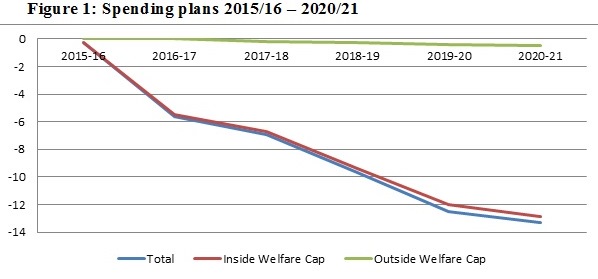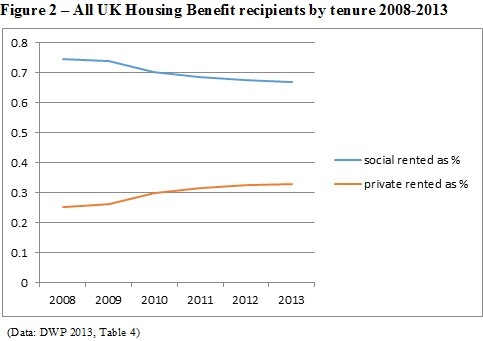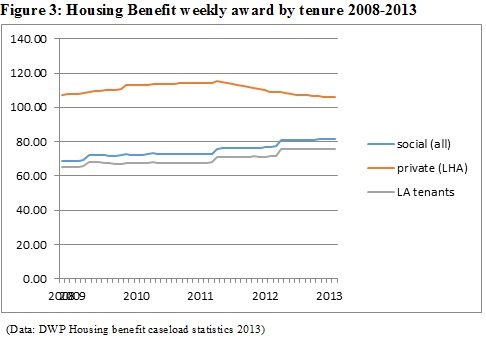November 18, 2015, by Public Social Policy
Thoughts on the “Welfare Reform” session that should be renamed “changes to social security”
by Jenni Cauvain and Bruce Stafford
This session, chaired by Simon Roberts, considered two policy areas that are central to the Conservative Party’s blue collar political messaging. Emphasis in the Conservative’s narrative on welfare and housing reforms has been about “making work pay” and “being on the side of working people”, which suggests that welfare cuts and policies such as Right to Buy have been thought to strike a chord with blue collar voters. Analyses by Bruce Stafford and Jenni Cauvain however suggest that behind the political rhetoric, another picture emerges which questions the extent to which these policies indeed support ‘working people’. Instead, different parts of the population stand to gain from blue collar conservatism: pensioners and existing homeowners, in effect, the asset-owning class. The session concluded with a useful reminder of the use of language in public policy, and that we should be mindful of using politically loaded terms such as “welfare” which emphasise an individualistic rather than collectivist approach to social protection.
Bruce Stafford outlined how the first ‘true blue’ budget of July 2015 had changed since the coalition government’s budget of March 2015. Office of Budget Responsibility figures revealed that the all-conservative government is cutting deeper into the welfare budget than the coalition government had proposed, by tightening the welfare cap[1] by an extra £13.1bn by 2019/20 (from £129.8bn in March to £113.5bn in July 2015). Bruce’s argument, based on an analysis of the composition of ‘capped’ and ‘upcapped’ elements of the welfare budget, was that more than 95% of the cuts will come from benefits to the working age population as illustrated in Figure 1.

(Data: OBR 2015, Table 4.20)
The reasons behind protecting pensioners are less than clear. What is more obvious is that as all major political parties have committed to the ‘triple lock’ of raising pensions in line with earnings, inflation or 2.5 per cent per annum, whichever is highest, the electoral advantage of the policy is reduced relative to other parties. Also, as long as the governing party is signed up to the austerity agenda as well as the protection of pensions, it is difficult to imagine a different kind of distribution in the burden of welfare cuts regardless of who is in government.
Jenni Cauvain argued that the Conservative’s vowed “passion for homeownership” is a misleading strapline, as their current approach to housing and welfare is overseeing a steady rise in private renting, both as a share of the overall tenure mix, and as a share of Housing Benefit (HB) clients relative to social renting, the latter trend depicted in Figure 2.

Apparently wooing blue collar votes, the Conservatives extended the Right to Buy (RTB) to Housing Association tenants in May 2015. The RTB replacement rates are pitiful despite promises to the contrary, so the social rented sector continues to decline. These trends are fuelling a change Housing Association’s business model: the benefit cap[1] and other cuts will tempt many social landlords to abandon their social purpose in favour of market rents and commercialisation. An increasing share of HB clients in the private rented sector is a ‘vicious cycle’; most private rents are higher than social rents (see Figure 3), HB costs will rise, cue calls for further austerity.

Jenni argued that the rationale behind the extension of RTB and prevalence of private renting is the ‘financialisation’ of the UK economy; our economic growth model relies excessively on house price inflation and private debt. Thus an increasing share of ‘working people’ needs to be funnelled into servicing private mortgage debt through either direct mortgage payments or rent.
The lively discussion focused on the purpose and role of so-called “welfare” in Britain and who is entitled to it. The take home message by Baroness Ruth Lister was that “welfare” is a divisive and loaded term aimed at social separation into “strivers” and “skivers”.
[1] Relating to the overall benefit and personal tax credit budget.
[2] Relating to the maximum that each household can receive in state benefits, £23k pa in London and £20k pa elsewhere in the country
No comments yet, fill out a comment to be the first

Leave a Reply